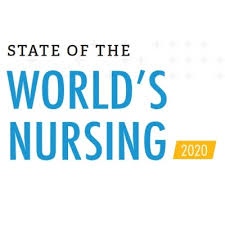Table of Contents
Daily Current Affairs for Government Exams:
Today Current Affairs:12th May 2020 for UPSC IAS exams, State PSC exams, SSC CGL, State SSC, RRB, Railways, Banking Exam & IBPS, etc
Contents:
- Mission Sagar
- 4G services in Jammu & Kashmir:
- India-China Border Dispute:
- State of the world’s nursing report
- Sample Registration System (SRS) bulletin :
- Other important current affairs
1.Mission Sagar’:

Indian Naval Ship Kesari has departed for Maldives, Mauritius, Seychelles, Madagascar and Comoros, to provide Food Items, COVID related Medicines including HCQ Tablets and Special Ayurvedic Medicines as part of the Government of India outreach amidst the ongoing COVID-19 pandemic.
- This deployment as ‘Mission Sagar’, is in line with India’s role as the first responder in the region to battle the COVID-19 pandemic and its resultant difficulties.
- The deployment is in consonance with the Prime Ministers’ vision of Security and Growth for All in the Region ‘SAGAR.’
- The operation is being progressed in close coordination with the Ministries of Defence and External Affairs, and other agencies of the Government of India.
- This is the first time that a single assistance mission is covering all island countries of the western Indian Ocean in one go except Sri Lanka, for which the second set of medicines have been airlifted.
- The mission comes on the heels of ‘Operation Samudra Setu’ which is a part of India’s efforts to repatriate citizens stranded abroad.
- Indian Ocean Region (IOR) countries were among the very first to receive India’s Covid assistance, which includes ‘Operation Sanjeevani’ in the Maldives and special Air India flights with medicine consignments to Sri Lanka, Mauritius, and Seychelles.
2. 4G services in Jammu & Kashmir:

Recently, the Supreme Court refused to restore 4G services in Jammu & Kashmir and ordered setting up of a high-powered committee to look into the contentions raised by petitioners against limited 2G services in the Union Territory.
- In August 2019, the Central government had suspended all modes of communications in the wake of revocation of Jammu and Kashmir’s special status, granted under Article 370. Eventually, services were partially restored, with internet speed restricted to 2G.
- A plea was filed by ‘Foundation for Media Professionals’ for the restoration of high-speed internet in Jammu and Kashmir in view of the Covid-19 situation.
- Balance of Human Rights and National Security: The Court ruled that the special circumstances occur in the Union Territory which requires a delicate balancing of national security concerns and human rights.
- Reference to the Previous Judgement: The bench also referred to its earlier decision in the Anuradha Bhasin case (2020) wherein it ordered a review of restrictions placed in J&K in the wake of abrogation of Article 370 of the Constitution.
- Constitution of Special Committee: The bench ordered the constitution of a Special Committee, headed by the Union Home Secretary, to determine the necessity of the continuation of limiting mobile Internet to 2G speed in the region.
- The committee is expected to suggest the alternatives regarding limiting the restrictions to those areas where it is necessary and the possible ways of allowing faster Internet (3G or 4G) on a trial basis over certain geographical areas.
Need for 4G in the wake of Covid-19 Pandemic:
- Health: 4G services are necessary to provide access to the medical fraternity including patients to access the latest information, advisories, and guidelines.
- Education: The petition also argued that the schools across the country have shifted to online classes in view of the lockdown but lack of the 4G internet puts J&K students at a disadvantage.
- Trade and Business: The lower internet service speed has also affected businesses dependent on the online mode.
- National Security Concerns: An issue of infiltration of outside sources through the borders and destabilizing the integrity of the nation was raised during the hearing.
3.India-China Border Dispute:

Rekindling tensions over boundary claims, Indian and Chinese troops have clashed at two points along the Line of Actual Control (LAC) recently, leaving personnel injured on both sides.
- The incidents took place in the Naku La sector — it’s a mountain pass in Sikkim at an altitude of over 5000 meters — on May 9, and in a contested area near Pangong Tso, a lake in Ladakh, on the night of May 5-6.
- But the Army played down the two incidents as “temporary and short-duration face-offs” that were resolved by “local commanders as per mutually-accepted protocols” through dialogue and flag meetings.
- This kind of incident does occur as boundaries are not resolved.
- The last major violent clash between the Indian and Chinese troops had taken place on the northern bank of the 134-km long Pangong Tso (Tso means lake), two-thirds of which is controlled by China as it extends from Tibet to Ladakh, in September 2019.
- There has, however, been a significant reduction in the border tensions since the 73-day troop confrontation in the Bhutanese territory of Doklam, near the Sikkim-Bhutan-Tibet tri-junction in June-August 2017, which saw the two armies move additional infantry battalions, tanks, artillery, and missile units towards the border.
4. State of the world’s nursing report.:

During the ‘Year of the Nurse and Midwife,’ WHO has released the first-ever State of the world’s nursing report. It has been developed by the World Health Organization (WHO) in partnership with the International Council of Nurses and the global Nursing Now campaign.
- Nursing is the largest occupational group in the health sector, accounting for approximately 59% of the health professions.
- The 27.9 million global nursing personnel include 19.3 million (69%) professional nurses, 6.0 million (22%) associate professional nurses, and 2.6 million (9%) who are not classified either way.
- The global shortage of nurses is estimated to be 5.9 million nurses in 2018. The report calls for creating at least 6 million new nursing jobs by 2030, primarily in low- and middle-income countries.
- The countries accounting for the largest shortages (in numerical terms) in 2018 included Bangladesh, India, Indonesia, Nigeria, and Pakistan.
- The World Health Organization (WHO) has designated 2020 as the “Year of the Nurse and Midwife”, in honor of the 200th birth anniversary of Florence Nightingale, the founder of modern nursing. She was born on 12 May 1820.
5.Sample Registration System (SRS) bulletin :

Sample Registration System (SRS) bulletin has been released by the Registrar General of India. It is based on data collected for 2018.
Findings:
- The national birth rate in 2018 stood at 20. It was 36.9 in 1971.
- Best and worst: Bihar (26.2) continues to remain at the top of the list in the birth rate while Andaman and Nicobar (11.2) are at the bottom.
- The rural-urban differential has also narrowed.
- However, the birth rate has continued to be higher in rural areas compared to urban areas in the last four decades.
- There has been about an 11 percent decline in the birth rate in the last decade, from 22.5 in 2009 to 20.0 in 2018.
- The corresponding decline in rural areas is 24.1 to 21.6, and in urban areas, it is 18.3 to 16.7.
- The death rate stood at 6.2 in 2018 from 14.9 in 1971.
- Best and worst: Chhattisgarh has the highest death rate, while Delhi has the lowest.
- The decline has been steeper in rural areas.
- In the last decade, the death rate at an all-India level has declined from 7.3 to 6.2. The corresponding decline in rural areas is 7.8 to 6.7 and in urban areas, 5.8 to 5.1.
- The infant mortality rate is at 32. It is about one-fourth as compared to 1971 (129).
- Worst and best: Madhya Pradesh (48) has the worst infant mortality rate in the country while Nagaland (4) has the best.
- In the last 10 years, IMR has witnessed a decline of about 35 percent in rural areas and about 32 percent in urban areas.
- The IMR at an all-India level has declined from 50 to 32 in the last decade.
SRS:
- The SRS is a demographic survey for providing reliable annual estimates of infant mortality rate, birth rate, death rate, and other fertility and mortality indicators at the national and sub-national levels.
Other important current affairs:
1. Recently, the Registration Committee (RC) under the Central Insecticides Board and Registration Committee (CIBRC) has recommended banning the use of antibiotics streptomycin and tetracycline.
- The RC recommended banning antibiotics streptomycin and tetracycline with immediate effect on crops where other options are available for bacterial disease control.
- Where no alternatives are available, the use of these antibiotics should be phased out by 2022-end. T
- ill then, the antibiotics could be used on crops strictly as per the label claim i.e. streptomycin sulphate (9%) and tetracycline hydrochloride (1%).
- The RC acknowledged that diseases in crops can be managed by using integrated pest management and other practices.
- Issues Involved:
- Rampant Misuse: Although streptomycin use is allowed for eight crops by the CIBRC, it was found to be used on many more crops in practice.
- Antibiotic Resistance: Exposure to antibiotics can lead to the development of antibiotic resistance in humans and animals.
2. The flagship social security scheme of the Government of India – ‘Atal Pension Yojana’ (APY) – has completed five years of implementation and garnered over 2.2 crore subscribers.
- The scheme was launched on 9th May 2015, with the objective of creating a universal social security system for all Indians, especially the poor, the underprivileged, and the workers in the unorganized sector.
- Administered By: Pension Fund Regulatory and Development Authority through National Pension System (NPS).
- Any citizen of India can join the APY scheme.
- The age of the subscriber should be between 18-40 years. The contribution levels would vary and would be low if a subscriber joins early and increases if she joins late.
- The scheme has been implemented comprehensively across the country covering all states and Union Territories with males to a female subscription ratio of 57:43.
- However, only 5% of the eligible population has been covered under APY to date.
3. National Institute of Virology, Pune, has developed India’s first indigenous antibody-based ELISA test kit – COVID KAVACH for diagnosis of novel Corona Virus.
- The kit has displayed high sensitivity and accuracy in the validation tests at different sites.
- It can test around 90 samples in approximately two and a half hours.
- The technology has been transferred to pharmaceutical manufacturing companies for mass-scale production.
- This is the first time India has developed an indigenous Enzyme-linked immunosorbent assay (ELISA) test for coronavirus. ELISA is routinely used for detecting HIV infection.
- The test will detect antibodies in blood samples that the body develops in response to infection by the SARS-CoV-2 novel coronavirus.
- The ELISA test developed by NIV gains significance as the rapid antibody tests imported from China were found to be unreliable and hence the States were instructed not to use them for detecting previous novel coronavirus infection.
5. Recently, Gujarat’s state government has cleared the Gujarat Agricultural Produce Markets (Amendment) Ordinance 2020.
- It has ended the monopoly of state-run Agricultural Produce Market Committees (APMCs) and has allowed private entities to set up their own market committees or sub-market yards.
- Restrictions on Jurisdiction: The ordinance restricts the jurisdiction of APMCs to the physical boundaries of their respective marketing yards and they can levy cess only on those transactions, happening within the boundary walls of their marketing yard.
- Opportunity to Private Markets: The ordinance permits for setting up of private markets.
- Unified Single Trading Licence: The ordinance provides traders with one unified single trading license through which they can participate in trading activities anywhere in the state.
- Expansion in Grievance Redressal: The director of an APMC and the Gujarat State Agriculture marketing board will also start taking care of the grievance redressal which was solely managed by the APMC till now.
- Expected Benefits to the Farmers: Permission to private entities will lead to competition and will offer the best possible remuneration to farmers for their produce.
7. Recently, the Rajasthan government has levied 2% Krishak Kalyan fees on agricultural produce brought or bought or sold in mandis.
- The 2% fees collected will be deposited in the Krishak Kalyan Kosh dedicated to the welfare of farmers in the state.
- However, farmer outfits are apprehensive that people at agricultural mandis will pass on the burden of the increased cost to farmers, already reeling by the lockdown imposed due to the coronavirus




